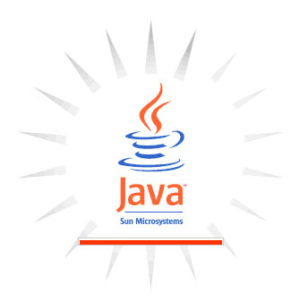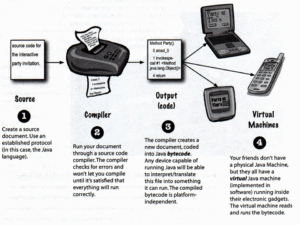
The above figure explains the lifecycle of a Java Program. In words, the figure can be explained as:
- A Java program is written using either a Text Editor like Textpad or an IDE like Eclipse and is saved as a .java file. (Program.java)
- The .java file is then compiled using Java compiler and a .class file is obtained from it. (Program.class)
- The .class file is now portable and can be used to run this Java program in any platform.
- Class file (Program.class) is interpreted by the JVM installed on a particular platform. JVM is part of the JRE software


